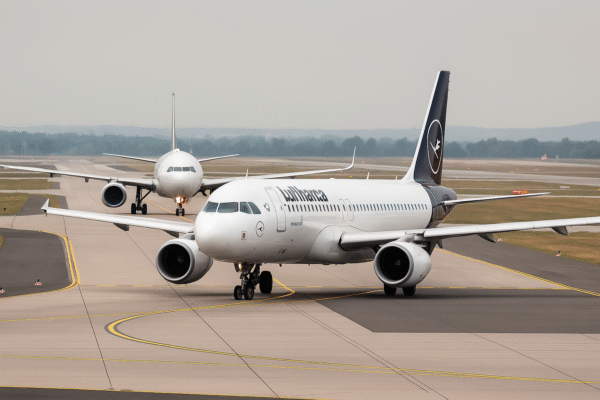A scheduled international flight by American Airlines turned into a tense in-air emergency as a 26-year-old Boeing 737-800 was forced to make an unexpected return to Los Angeles International Airport (LAX) shortly after departure. Originally bound for Mexico City, Flight 2546 experienced a technical malfunction that raised immediate safety alarms and led to a heavy emergency landing back at LAX.
The aircraft, operating under tail number N910AN, reached 26,475 feet before leveling off. Pilots quickly communicated an issue with cabin pressurization, later attributed to a window seal malfunction—a critical component in maintaining internal air pressure at high altitudes.
With no time to waste and unable to burn off excess fuel, the aircraft made a swift U-turn and returned to LAX, landing safely at 10:20 p.m. local time. No injuries were reported, but passengers described the atmosphere as “unnervingly calm,” highlighting the unexpected nature of the emergency.
🛫 Aircraft Age Sparks Fleet Safety Debate
The Boeing 737-800 in question entered service over two decades ago and remains one of the older jets in American Airlines’ active fleet. Though regularly maintained and compliant with FAA standards, the aircraft’s age and accumulated flight cycles have brought renewed scrutiny to the risks of long-term commercial aircraft operations.
The incident has intensified discussions among industry professionals about how much longer legacy aircraft can safely remain in service. While the 737-800 is renowned for its durability, issues involving seals, pressurization systems, and fuselage fatigue become more likely as jets age.
🧭 FAA Launches Immediate Safety Investigation
In response to the emergency landing, the Federal Aviation Administration (FAA) has launched a full-scale investigation into the mechanical failure. A spokesperson confirmed the incident involved a pressurization issue related to a degraded window seal, prompting a precautionary diversion.
The FAA is now evaluating whether older aircraft in American Airlines’ fleet require additional inspections. This falls under a broader initiative to increase oversight on aircraft exceeding 25 years of age, especially in high-density, international travel corridors such as those between the U.S. and Latin America.
🧳 Passenger Disruptions and Delays at LAX
Travel plans were significantly disrupted for the 145 passengers onboard. Many had connections in Mexico City, ranging from family visits to business meetings and tourism plans. Due to the lack of an immediate replacement aircraft, American Airlines provided overnight accommodations and food vouchers to affected travelers.
Passengers spoke of long queues for rebooking assistance and crowded customer service counters at LAX. With the summer travel season in full swing, the ripple effects were felt across connecting flights, particularly those headed to Central and South America.
✈️ Terminal Traffic and Emergency Response
The emergency diversion added strain to an already busy night at Los Angeles International Airport. Emergency crews, including fire and medical teams, were pre-deployed and staged at the arrival gate. Terminal staff worked quickly to accommodate displaced travelers and reschedule delayed departures.
Several gates at Terminal 4 and Terminal 5 were reassigned to manage overflow, resulting in brief delays for other outbound flights. Airport officials praised the professionalism of both the flight crew and emergency responders, noting that the safe outcome was a result of training and adherence to protocol.
🚨 Renewed Pressure to Modernize Fleets
American Airlines, headquartered in Fort Worth, Texas, has been gradually phasing out older narrow-body aircraft like the Boeing 737-800. However, global supply chain issues and financial constraints have slowed this process. As of mid-2025, dozens of jets in the airline’s fleet are over 20 years old.
This incident has placed fresh pressure on the airline—and others across the U.S.—to accelerate fleet renewal efforts. Travelers are becoming more informed about the aircraft they fly on, often researching registration numbers, aircraft models, and even maintenance histories before booking.
🧭 What This Means for Travelers
With increasing access to flight data and transparency tools, travelers are now empowered to verify flight details before they fly. Apps like FlightRadar24 and websites like Airfleets.net provide information on aircraft age, maintenance records, and past incident logs.
Aviation experts also recommend:
- Booking with airlines that maintain newer aircraft fleets
- Signing up for airline SMS alerts to receive real-time updates
- Reviewing safety ratings and inspection records where available
✅ Final Thoughts: Safe Landing, But Warning Bells Sound
While American Airlines Flight 2546 landed safely and all passengers disembarked unharmed, the incident has prompted wider questions about aircraft longevity, emergency readiness, and aviation regulatory standards. The FAA’s investigation will likely inform upcoming safety directives, especially regarding the operational life of commercial jets.
This emergency may have ended well, but it serves as a critical reminder: in aviation, age, maintenance, and vigilance are inseparable. As global travel reaches pre-pandemic levels, safety must evolve in lockstep with demand.





















